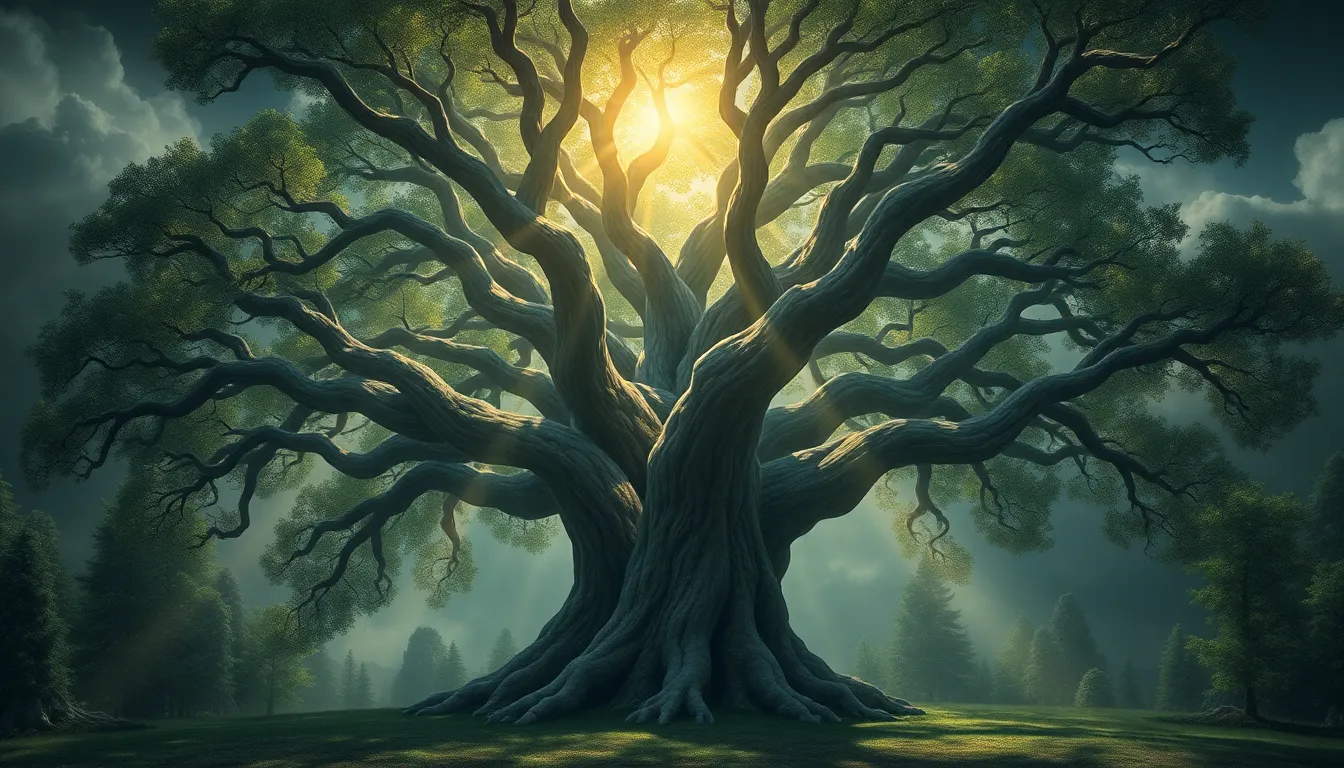The Sacred Teak: Myths of Strength and Beauty
I. Introduction
The term “Sacred Teak” refers to the revered status of the teak tree, scientifically known as Tectona grandis, which has long been celebrated for its exceptional qualities. Teak is not only a source of high-quality timber but also an integral part of various cultures around the world.
In many societies, teak holds significant cultural importance, often associated with strength and beauty. From ancient civilizations to modern times, the myths surrounding teak have shaped its perception and use.
This article delves into the historical significance, aesthetic appeal, durability, spiritual meanings, environmental impact, economic significance, contemporary uses, and the myths surrounding this extraordinary wood.
II. The Historical Significance of Teak
A. Origin and Cultivation of Teak Trees
Teak trees are native to South and Southeast Asia, particularly in countries like India, Myanmar, Thailand, and Indonesia. The cultivation of teak dates back thousands of years, with its first recorded use in ancient Indian texts.
B. Teak in Ancient Civilizations
Teak was highly valued in ancient civilizations for its durability and resistance to decay, making it a preferred choice for shipbuilding and construction. Historical records indicate that the ancient Egyptians and Greeks utilized teak wood for various structures.
C. The Role of Teak in Maritime History
Teak’s robust nature made it the wood of choice for shipbuilders. The famous ships of the British Royal Navy, along with many trading vessels, were constructed using teak, showcasing its importance in maritime history.
III. The Aesthetic Appeal of Teak Wood
A. Characteristics of Teak: Color, Grain, and Texture
Teak wood is known for its rich, golden-brown hue, fine grain, and smooth texture, which often improves with age. Its unique combination of beauty and functionality makes it a prized material for various applications.
B. Traditional Uses in Furniture and Architecture
Traditionally, teak has been used in:
- High-end furniture
- Boat building
- Flooring
- Architectural elements such as doors and windows
C. The Art of Teak Craftsmanship
Artisans have mastered the craft of working with teak, creating intricate designs that highlight its natural beauty. Teak craftsmanship is celebrated for its attention to detail and durability, making each piece a work of art.
IV. Myths of Strength: Teak’s Durability and Resistance
A. Comparison with Other Hardwoods
Teak is often compared to other hardwoods such as oak and mahogany. While each has its unique qualities, teak is lauded for its superior resistance to moisture and pests.
B. Resistance to Weather and Pests
One of the most notable features of teak is its natural oils, which provide resistance to water, insects, and decay. This makes teak particularly suitable for outdoor furniture and marine applications.
C. Cultural Beliefs in Teak’s Enduring Nature
Many cultures believe that the strength of teak wood symbolizes endurance and longevity, often featuring it in rituals and as a metaphor for resilience.
V. Spiritual and Cultural Significance of Teak
A. Teak in Religious Rituals and Symbolism
In numerous cultures, teak is regarded as a sacred tree. It is often used in religious ceremonies and is believed to bring good fortune and protection.
B. Folklore and Legends Associated with Teak
Folklore surrounding teak includes tales of its divine origins, often depicting it as a tree favored by the gods. These stories contribute to its revered status.
C. Teak in Traditional Medicine and Healing Practices
In traditional medicine, various parts of the teak tree are believed to have healing properties, used in remedies for ailments ranging from skin issues to digestive problems.
VI. Environmental Impact and Sustainability of Teak
A. The Role of Teak in Forest Ecosystems
Teak trees play a crucial role in forest ecosystems, providing habitat for wildlife and contributing to biodiversity. Their presence supports various flora and fauna.
B. Sustainable Harvesting Practices
Sustainable harvesting practices are essential to maintain teak populations. These practices include selective logging and replanting to ensure the long-term health of teak forests.
C. Challenges of Overexploitation and Conservation Efforts
Despite its many benefits, teak faces threats from overexploitation and deforestation. Conservation efforts focus on protecting natural habitats and promoting responsible cultivation.
VII. The Global Economy of Teak
A. Teak Trade and Its Economic Impact
The global trade of teak wood significantly impacts economies, particularly in producing countries. It generates income and employment opportunities in rural areas.
B. The Demand for Teak in Modern Markets
As demand for high-quality wood products increases, teak remains a sought-after commodity in the furniture and construction industries, driving its market value.
C. The Future of Teak in a Globalized Economy
The future of teak will largely depend on sustainable practices and the balance between economic gain and environmental conservation in a globalized market.
VIII. Contemporary Uses of Teak
A. Innovations in Teak Products
Innovations in teak products continue to emerge, including modern furniture designs, outdoor living solutions, and eco-friendly applications.
B. The Rise of Eco-friendly Teak Alternatives
With growing environmental concerns, the market has seen the rise of eco-friendly teak alternatives, such as reclaimed wood and composite materials, offering sustainable options for consumers.
C. Teak in the Interior Design Trend
Teak is increasingly popular in interior design due to its aesthetic appeal and durability. Designers often incorporate it into modern homes for a warm, elegant touch.
IX. Debunking Myths: Facts vs. Fiction about Teak
A. Common Misconceptions About Teak
Despite its popularity, there are common misconceptions about teak, such as its cost and maintenance requirements. Understanding the facts can help consumers make informed decisions.
B. Scientific Studies Supporting Teak’s Qualities
Scientific studies have confirmed teak’s superior qualities, including its durability, resistance to pests, and stability, reinforcing its esteemed reputation.
C. Expert Opinions on the Myths of Teak
Experts in forestry and wood science often debunk myths surrounding teak, emphasizing its importance in sustainable practices and its myriad benefits.
X. Conclusion
A. The Enduring Legacy of Sacred Teak
The legacy of sacred teak continues to endure, celebrated for its strength, beauty, and significance across cultures. It remains a vital resource and symbol of resilience.
B. Reflection on the Myths of Strength and Beauty
As we reflect on the myths surrounding teak, it is clear that they are rooted in its remarkable qualities and the deep cultural significance it holds.
C. Call to Action for Sustainable Practices and Appreciation
As we move forward, it is essential to embrace sustainable practices and appreciate the sacred teak for its enduring beauty and strength, ensuring its preservation for future generations.



